Nei Ho
I last visited Hong Kong (HK) in 1970, then a magical city of orange-sailed junks crisscrossing the waters between islands, and crowded streets with banner-like laundry hanging off every balcony. It was the Star Ferry, Bruce Lee, and The World of Suzie Wong that we had read about and seen in the movies. Now a chic, cosmopolitan world financial center, Hong Kong’s streets seem paved with the gold that hangs in the shop windows of its luxury avenues. The city seems to build where no others would dare, jutting out of rocky cliffs and hanging over narrow streets and staircases; a mass of glass and human glory.
Into this metropolis of old and new, bounded by a typhoon and historic Democracy protests, came 500 conservators (and me) for the International Institute for Conservation 2014 Biennial Congress (IIC2014). Themed An Unbroken History: Conserving East Asian Works of Art and Heritage, presentations included fascinating research on lacquer, scroll painting, textile, stone, glass and wood.
The conservation team from The Queen Sirikit Museum of Textiles, with whom I consult, presented our project to blend tradition and innovation; chronicling textile preservation practices and plants from elders in Thailand. In contrast to the many technical case studies presented, our research takes a larger cultural view, embracing both the tangible and intangible, in an effort to define textile conservation in Asia today.
The project, still in its infancy, has interviewed 50 subjects and compiled a database of 30 regional plants formerly used to clean, remove stains and repel insects from textiles. We now hope to partner with botanists and scientists, collect plant material, replicate recipes and make comparisons with current synthetic detergents used in textile conservation practices. We hope that present day protocols may soon incorporate these traditional practices.
Between receptions at the Hong Kong Maritime Museum, the Hong Kong Heritage Museum and the Asia Society, we drank tea, glorified the old and explained our craftsmanship, sharing hundreds of stories with new colleagues from Hong Kong, Taiwan, Korea, Singapore and Europe.
And then there were textiles…
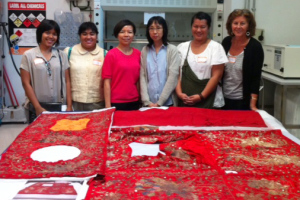 At the Hong Kong Heritage Museum, I saw red – it is the color of the Ching dynasty silk birthday hanging, and also of the bridal palanquin cover that were being meticulously conserved with fine stitching and selective patch supports.
At the Hong Kong Heritage Museum, I saw red – it is the color of the Ching dynasty silk birthday hanging, and also of the bridal palanquin cover that were being meticulously conserved with fine stitching and selective patch supports.
QSMT sends a big thank you to Ms. Alice Tsang and Angela for such a splendid tour!
At Heritage Museum’s newly opened Cantonese Opera Hall, add gold for textiles that would have turned Liberace green with envy! The Opera Hall boasts a theatre with bamboo scaffolding, star’s dressing rooms with swinging neon bar lights, cases of sequined clothes and sparkling jewelry, and profiles of some of the famous artists from the 1930’s to the 1980’s. I learned about the early troupes, called ‘Red Boat’ troupes, who lived on the Pearl River, and about the spread of Cantonese opera to Singapore, Cholon, Saigon, Bangkok, and San Francisco by 1850.
These costumes are spectacular! Cirque du Soleil meets 17th century Catholic cardinals. Characterized by large robes with sweeping sleeves and vertical collars, each heavily embroidered and sequined costume has fantastic footwear, crowns, and headdresses, jewelry and make-up to match.
Ms. Chung Siu Lei was known for her acrobatic agility. Here is her intricate blue sequined armor-like dress from the 1950’s (left).
Later costumes were influenced by Beijing styles such as dragon robes, and western designs of a more gossamer, romantic nature. The elaborate opera houses dotted HK and with its stars becoming international celebrities. Even today, the influence continues as seen in next month’s production of Turandot at HK City Hall.
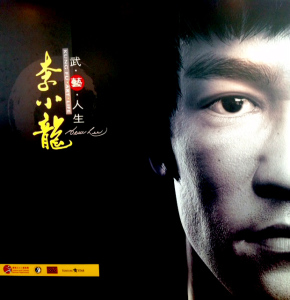 Also at the Heritage Museum is a fabulous exhibit to one of HK’s famous residents, Bruce Lee. This presentation includes a holographic Bruce Lee, footage of most of his films, and Green Hornet series, letters, library, family photos, and all his cool 1970’s clothes and aviator glasses. What a legacy in such a short time.
Also at the Heritage Museum is a fabulous exhibit to one of HK’s famous residents, Bruce Lee. This presentation includes a holographic Bruce Lee, footage of most of his films, and Green Hornet series, letters, library, family photos, and all his cool 1970’s clothes and aviator glasses. What a legacy in such a short time.
It was an enjoyable, educational and sometimes breathtaking revisit to Hong Kong. Although it has changed, it embraces the past, sharing old stories for new growth. Maybe there is less laundry hanging from its balconies, but Bruce Lee lives on in the bronze statue that watches the Star Ferry crossing back and forth in Victoria Harbor.
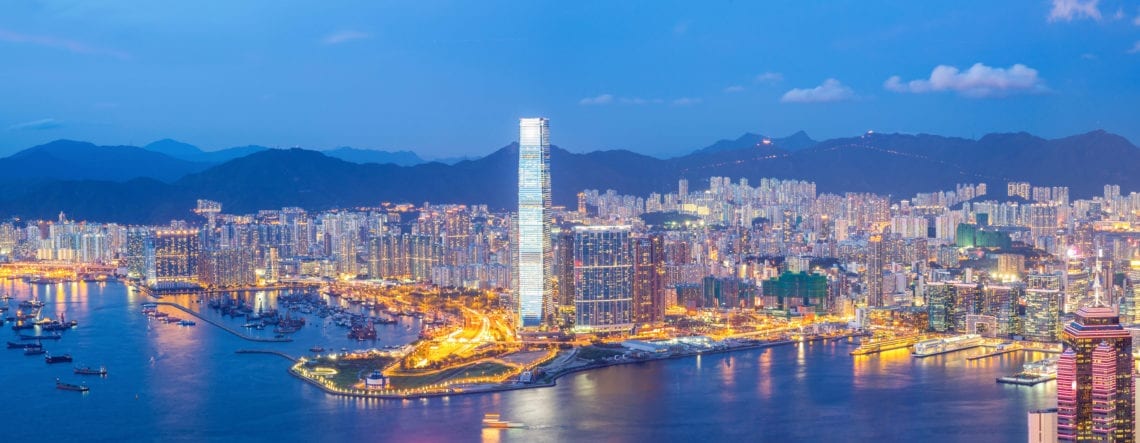
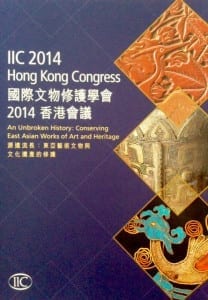
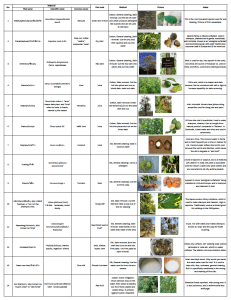
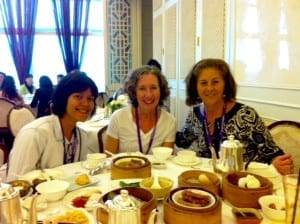
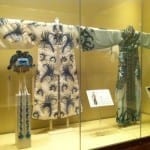
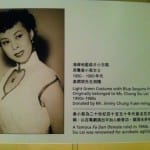
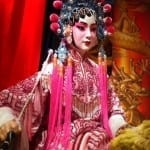
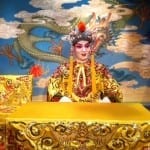
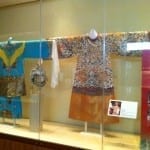
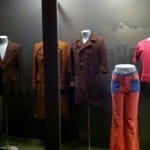
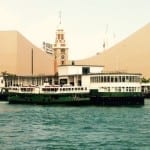
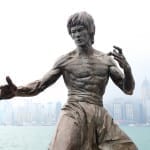


Julia, I really enjoyed reading about your time in Hong Kong. We lived there from 1989-1992. Our youngest daughter has been living there for over 15 years, and we plan to go in March. I hope, like you, to get to the Hong Kong Heritage Museum and have dim sum at City Hall. Last time we visited the museum with a 4 year old granddaughter who loved to press the buttons that explained exhibits, and dashed from one to another. Now that she’s 7, she should have more interest in the actual exhibit. I’m glad you found the trip rewarding and were able to share your knowledge with others at the conference. Lee M.
What a wonderful article. Not only it is informative, but makes Hong Kong come alive and the role of conversation so important in our digitized world.
Beautifully written Julia – what wonderful travels and interesting experiences you are having…Jan
Thank you so much for sharing this Julia. Your account of the visit is fascinating and brings back memories of long past visits to Hong Kong. Of especial interest, however, is the useful chart of natural textile cleansers, preservatives, insect repellants, and scents. If you do not mind, I would like to share this and will duly give credit. Keep these wonderful newsletters coming!
Thanks for posting Julia. You have such an interesting career; it’s obviously your passion. It’s wonderful you are sharing it with the world. And traveling to beautiful cities, and sharing that with us! HK is now on my bucket list. …Penny
Sabaidee Julia!!! loved reading about you in hong kong. looking forward to our catch up. Wish you had, had time to visit us and our textile collection in Laos!!!
Julia this is excellent. Thank you. Love the Liberace reference too!
Julia – This article is so beautifully written – I feel as though I were there with you! What important and fascinating work you are doing with the regional plants and with your conservation work more generally!
Long time no see. julia.
it was fantastic tour with you.
it looks like korean traditional
clothings.
thank you so much again.
take care cold weather.. see you.
Hi Julia,
what a lovely post about Hong Kong and IIC, really enjoyed reading it.
Julia,
Thank you for sharing this. I have many fond memories of Hong Kong. My parents were married there in 1960 and we went back to visit family friends in Kowloon up until the mid 1980’s. It has certainly changed. I am so glad that you were able to present your work. See you soon.
Wow, seems like you had an amazing trip! The project to talk with Thai elders sounds particularly exciting; I look forward to hearing about the results!